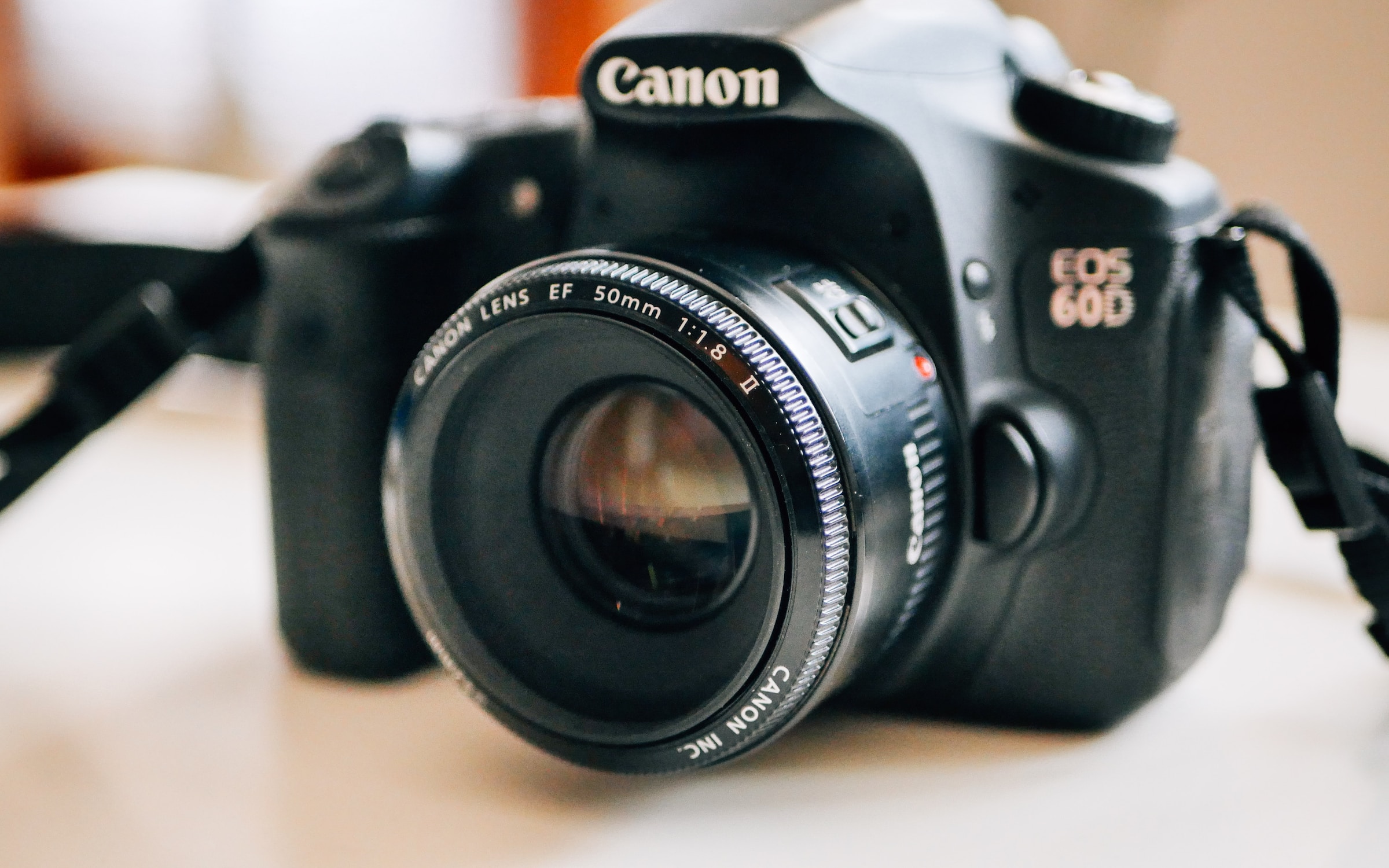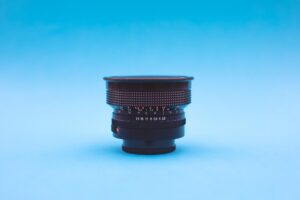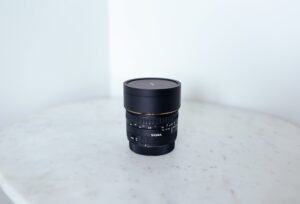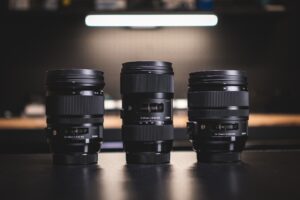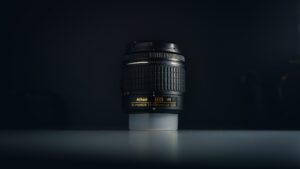If you are new to photography, you might be wondering what is a prime lens and why you should use one.
A prime lens is a fixed focal length lens that doesn’t let you zoom in or out.
It might sound limiting, but it actually has many advantages over a zoom lens, such as sharper image quality, wider aperture, better low-light performance, and more creative control.
In this article, we will help you understand what a prime lens is and how to use it effectively for different situations and genres of photography.
Key Takeaways
| Topic | Summary |
|---|---|
| What is a prime lens? | A prime lens is a lens with a fixed focal length that doesn’t let you zoom in or out. |
| Why use a prime lens? | A prime lens has many benefits, such as sharper image quality, wider aperture, better low-light performance, and more creative control. |
| Types of prime lenses | There are four main types of prime lenses: wide-angle, standard, telephoto, and specialty lenses. Each type has its own characteristics and applications. |
| How to choose a prime lens | Some factors to consider when choosing a prime lens are sensor size, aperture, build quality, autofocus, and image stabilization. |
| How to use a prime lens | A prime lens can be used effectively for different situations and genres of photography, such as portrait, landscape, street, and macro photography. |
What is a Prime Lens?
A prime lens is a lens with a fixed focal length that doesn’t let you zoom in or out.
This means that the angle of view and magnification of the lens are constant.
For example, if you have a 50mm prime lens, you can only take photos with a 50mm perspective. If you want to change the composition of your shot, you have to physically move closer or farther away from your subject.
Focal length is measured in millimeters (mm) and it affects how much of the scene you can capture with your lens and how large your subject appears in the frame.
The smaller the focal length, the wider the angle of view and the more of the scene you can capture. The larger the focal length, the narrower the angle of view and the less of the scene you can capture.
Some examples of common prime lens focal lengths are:
- 24mm: This is a wide-angle lens that captures a large field of view and creates a sense of depth and perspective. It is good for landscapes, architecture, interiors, and environmental portraits.
- 35mm: This is a standard lens that produces images that are similar to how the human eye sees the world. It is good for street photography, documentary photography, and general-purpose photography.
- 50mm: This is also a standard lens that is often called the “nifty fifty” because of its versatility and affordability. It is good for portraits, weddings, events, and everyday photography.
- 85mm: This is a telephoto lens that magnifies distant subjects and compresses the background. It is good for headshots, fashion photography, sports photography, and wildlife photography.
Prime lenses are different from zoom lenses, which have variable focal lengths that let you zoom in or out by twisting the barrel of the lens or pushing a button.
Zoom lenses are convenient because they allow you to change the composition of your shot without moving your feet. However, they also have some drawbacks compared to prime lenses.
Want to learn more about the difference between zoom and prime lenses? Check out our guide here.
Why Use a Prime Lens?
There are many reasons why you might want to use a prime lens instead of a zoom lens for your photography. Here are some of the benefits of using a prime lens:
- Sharper image quality: Prime lenses have fewer moving parts and optical elements than zoom lenses, which reduces distortion and aberration. This means that prime lenses can produce sharper images with more details and contrast than zoom lenses.
- Better low-light performance: Prime lenses can capture more light than zoom lenses, which enables faster shutter speeds and lower ISO settings in dim conditions. Shutter speed is measured in seconds (s) and it affects how long your camera’s shutter stays open to expose the sensor to light. The faster the shutter speed, the less light your camera can capture. The slower the shutter speed, the more light your camera can capture.
- More creative control: Prime lenses force you to move around and compose your shots more carefully, which can improve your photography skills and style. Zoom lenses can make you lazy and rely on the zoom function to change the composition of your shot. Prime lenses can make you more creative and think about how to use the available space, light, and perspective to tell a story with your image.
- Wider aperture: Prime lenses have larger maximum apertures than zoom lenses, which allows more light to enter the camera and creates a shallower depth of field. Aperture is measured in f-stops (f/) and it affects how much of your image is in focus. The smaller the f-stop number, the wider the aperture and the more light your lens can gather. The larger the f-stop number, the smaller the aperture and the less light your lens can gather.
A wide aperture has two advantages:
- It allows you to shoot in low-light conditions without using a flash or increasing your ISO setting (which can introduce noise to your image).
- It allows you to create a beautiful bokeh effect (the blurred background behind your subject) that isolates your subject from the background and draws attention to it.
Some examples of wide aperture prime lenses are:
- 24mm f/1.4: This is an ultra-wide-angle lens that can capture stunning nightscapes and astrophotography with a shallow depth of field.
- 35mm f/1.8: This is a standard lens that can capture natural and candid shots with a smooth bokeh effect.
- 50mm f/1.4: This is also a standard lens that can capture sharp and bright portraits with a creamy bokeh effect.
- 85mm f/1.8: This is a telephoto lens that can capture flattering and dramatic portraits with a blurred background.
A fast shutter speed has two advantages:
- It allows you to freeze motion and avoid blur when shooting moving subjects or handheld.
- It allows you to reduce camera shake and noise when shooting in low-light conditions.
Some examples of fast shutter speeds are:
- 1/1000s: This is good for freezing fast-moving subjects, such as sports, wildlife, or action photography.
- 1/250s: This is good for freezing moderate-moving subjects, such as people, pets, or street photography.
- 1/60s: This is good for freezing slow-moving subjects, such as still life, food, or product photography.
Some examples of creative techniques you can use with prime lenses are:
- Leading lines: These are lines that guide the viewer’s eye to the main subject or point of interest in your image. You can use wide-angle prime lenses to emphasize the depth and perspective of the scene and create leading lines with roads, fences, bridges, buildings, etc.
- Rule of thirds: This is a compositional rule that divides your image into nine equal parts by two horizontal and two vertical lines. You can place your subject or point of interest along one of these lines or at one of their intersections to create a balanced and interesting image. You can use standard prime lenses to create natural and candid shots that follow the rule of thirds.
- Negative space: This is the empty space around your subject that creates contrast and draws attention to it. You can use telephoto prime lenses to isolate your subject from the background and create negative space with bokeh, sky, water, etc.
These are some of the benefits of using a prime lens for your photography. In the next part of this article, we will introduce the main types of prime lenses and how to choose and use them effectively.
Types of Prime Lenses
There are four main types of prime lenses based on their focal length range: wide-angle, standard, telephoto, and specialty lenses.
Each type has its own characteristics and applications for different situations and genres of photography.
In this section, we will explain the features and uses of each type of prime lens with examples and images.
Wide-Angle Lenses
Wide-angle lenses are lenses with focal lengths between 14mm and 35mm.
They capture a wide field of view and create a sense of depth and perspective in your images. They are good for landscapes, architecture, interiors, and environmental portraits.
Some of the advantages of using wide-angle lenses are:
- They can fit more of the scene into the frame, which is useful for capturing large or expansive subjects, such as mountains, buildings, or rooms.
- They can create a dramatic effect by exaggerating the distance and size difference between the foreground and background elements, which can draw attention to your subject or point of interest.
- They can enhance the sense of scale and space in your images, which can make them more immersive and engaging.
Some of the disadvantages of using wide-angle lenses are:
- They can distort the edges and corners of your images, which can make straight lines appear curved or bent. This can be corrected by using lens correction tools in post-processing or by cropping your images.
- They can make your subject look smaller or farther away than they actually are, which can reduce their impact or importance in your images. This can be avoided by getting closer to your subject or by using a larger aperture to create a shallow depth of field.
- They can introduce unwanted elements or distractions into your frame, such as people, cars, or clutter. This can be avoided by being careful with your composition or by using a lens hood to block unwanted light sources.
Some examples of wide-angle prime lenses are:
| Lens | Aperture |
|---|---|
| Canon EF 24mm f/1.4L II USM | f/1.4 |
| Nikon AF-S NIKKOR 24mm f/1.8G ED | f/1.8 |
| Sony FE 28mm f/2 | f/2 |
Standard Lenses
Standard lenses are lenses with focal lengths between 35mm and 70mm.
They produce images that are similar to how the human eye sees the world. They are good for street photography, documentary photography, and general-purpose photography.
Some of the advantages of using standard lenses are:
- They can capture natural and candid shots that reflect reality without distortion or exaggeration. They are ideal for capturing people, events, and everyday scenes.
- They can create a balanced and pleasing composition that follows the rule of thirds. They are easy to use and versatile for different situations and lighting conditions.
- They can create a smooth bokeh effect that isolates your subject from the background and draws attention to it. They are great for portraits, weddings, events, and everyday photography.
Some of the disadvantages of using standard lenses are:
- They can be boring or ordinary if you don’t use them creatively or effectively. They require you to move around and compose your shots carefully to avoid dull or flat images.
- They can be too wide or too narrow for some subjects or scenes. They might not fit everything you want into the frame or they might not get close enough to your subject.
- They can be affected by camera shake or blur when shooting handheld at slow shutter speeds or low-light conditions. This can be avoided by using a tripod or a lens with image stabilization.
Some examples of standard prime lenses are:
| Lens | Aperture |
|---|---|
| Canon EF 50mm f/1.8 STM | f/1.8 |
| Nikon AF-S NIKKOR 50mm f/1.8G | f/1.8 |
| Sony FE 50mm f/1.8 | f/1.8 |
Telephoto Lenses
Telephoto lenses are lenses with focal lengths between 70mm and 200mm. They magnify distant subjects and compress the background.
They are good for headshots, fashion photography, sports photography, and wildlife photography.
Some of the advantages of using telephoto lenses are:
- They can bring your subject closer to you without physically moving closer to them, which is useful for capturing subjects that are far away or inaccessible, such as animals, athletes, or celebrities.
- They can create a shallow depth of field that isolates your subject from the background and creates a blurred background. They are excellent for portraits, fashion photography, sports photography, and wildlife photography.
- They can create a flattering and dramatic effect by compressing the perspective and making your subject appear larger or more prominent in the frame. They are ideal for headshots, fashion photography, sports photography, and wildlife photography.
Some of the disadvantages of using telephoto lenses are:
- They can be heavy and bulky to carry around, which can make them inconvenient or uncomfortable to use for long periods of time. They might also require a tripod or a monopod to support them and avoid camera shake or blur.
- They can be expensive and require more investment than other types of lenses. They might also have a smaller maximum aperture than other types of lenses, which can limit their low-light performance or bokeh effect.
- They can be intrusive or intimidating to your subject or other people around you, which can affect their behavior or reaction. They might also attract unwanted attention or suspicion from security or authorities.
Some examples of telephoto prime lenses are:
| Lens | Aperture |
|---|---|
| Canon EF 85mm f/1.8 USM | f/1.8 |
| Nikon AF-S NIKKOR 85mm f/1.8G | f/1.8 |
| Sony FE 85mm f/1.8 | f/1.8 |
Specialty Lenses
Specialty lenses are lenses that have unique features or effects that make them different from other types of lenses. They include macro lenses, fisheye lenses, tilt-shift lenses, and more. They are good for creative and artistic photography.
Some of the advantages of using specialty lenses are:
- They can capture details and textures that are invisible to the naked eye or other types of lenses, which can reveal a new world of beauty and wonder. They are perfect for macro photography, such as flowers, insects, jewelry, etc.
- They can create a distorted or exaggerated perspective that can make your images more fun and interesting. They are great for fisheye photography, such as landscapes, architecture, interiors, etc.
- They can create a selective focus or tilt effect that can make your images more artistic and professional. They are ideal for tilt-shift photography, such as cityscapes, miniatures, portraits, etc.
Some of the disadvantages of using specialty lenses are:
- They can be difficult to use and require more skill and practice than other types of lenses. They might also require additional accessories or equipment to achieve the desired effect, such as extension tubes, filters, tripods, etc.
- They can be expensive and require more investment than other types of lenses. They might also have a limited availability or compatibility with your camera system or model.
- They can be overused or misused if you don’t use them appropriately or sparingly for your images.
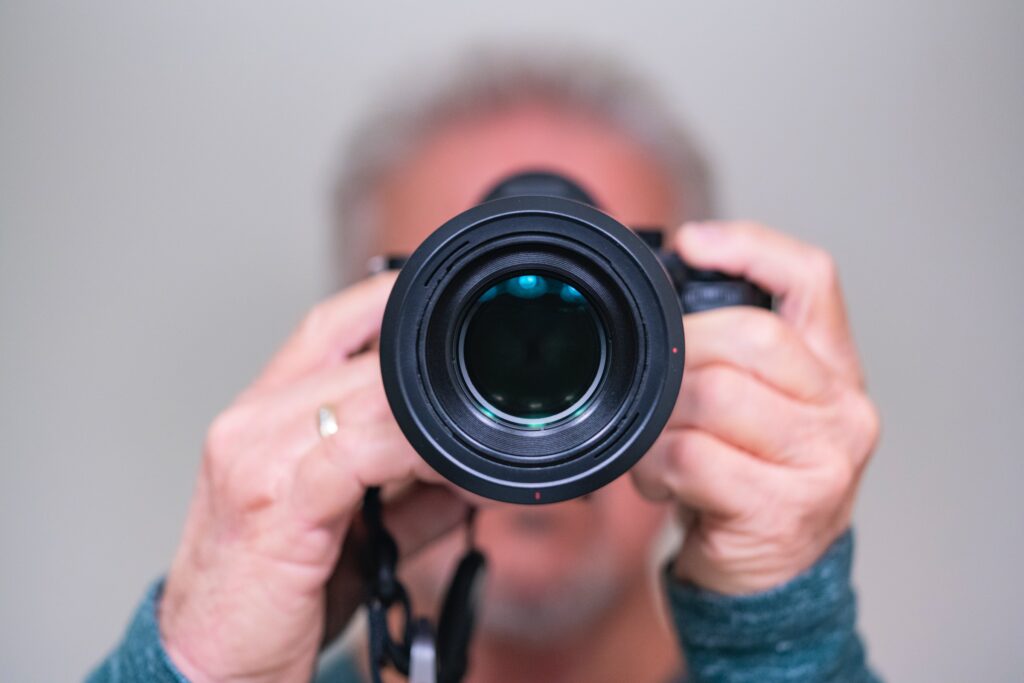
How to Choose a Prime Lens
Now that you know the main types of prime lenses and their features and uses, you might be wondering how to choose a prime lens for your camera and photography needs. There are some tips and factors to consider when choosing a prime lens, such as:
Sensor size
This affects the effective focal length and angle of view of your lens, depending on whether you have a full-frame or crop-sensor camera.
A full-frame camera has a sensor size of 36mm x 24mm, which is equivalent to the size of a 35mm film. A crop-sensor camera has a smaller sensor size, which varies depending on the brand and model of your camera.
For example, a Canon APS-C camera has a sensor size of 22.3mm x 14.9mm, while a Nikon DX camera has a sensor size of 23.6mm x 15.6mm.
The sensor size affects the effective focal length and angle of view of your lens by multiplying it by a crop factor, which is the ratio of the diagonal length of the full-frame sensor to the diagonal length of the crop-sensor.
For example, a Canon APS-C camera has a crop factor of 1.6x, while a Nikon DX camera has a crop factor of 1.5x.
This means that if you use a 50mm prime lens on a Canon APS-C camera, the effective focal length will be 50mm x 1.6 = 80mm, and the angle of view will be narrower than on a full-frame camera.
Similarly, if you use a 50mm prime lens on a Nikon DX camera, the effective focal length will be 50mm x 1.5 = 75mm, and the angle of view will be narrower than on a full-frame camera.
Therefore, when choosing a prime lens for your camera, you need to consider the sensor size and the crop factor to get the desired focal length and angle of view for your images.
Aperture
This determines how much light your lens can gather and how shallow your depth of field can be.
As we mentioned before, aperture is measured in f-stops (f/) and it affects how much of your image is in focus.
The smaller the f-stop number, the wider the aperture and the more light your lens can gather. The larger the f-stop number, the smaller the aperture and the less light your lens can gather.
A wide aperture has two advantages:
- It allows you to shoot in low-light conditions without using a flash or increasing your ISO setting (which can introduce noise to your image).
- It allows you to create a beautiful bokeh effect (the blurred background behind your subject) that isolates your subject from the background and draws attention to it.
Therefore, when choosing a prime lens for your camera, you need to consider the maximum aperture of your lens and how it affects your image quality and depth of field.
Build quality
This influences the durability, weight, size, and price of your lens. Prime lenses vary in their build quality depending on their materials, design, and features.
Some prime lenses are made of metal or plastic, some have weather sealing or coating, some have manual or automatic focus modes, some have image stabilization or not, etc.
The build quality affects the durability, weight, size, and price of your lens in different ways:
- Durability: A metal lens is more durable than a plastic lens, but it is also more prone to scratches or dents. A weather-sealed lens is more resistant to dust or moisture than a non-sealed lens, but it is also more expensive.
- Weight: A metal lens is heavier than a plastic lens, which can make it more stable or more tiring to use. A large-aperture lens is heavier than a small-aperture lens, which can make it more difficult or easier to carry around.
- Size: A metal lens is larger than a plastic lens, which can make it more conspicuous or more discreet to use. A large-aperture lens is larger than a small-aperture lens, which can make it more bulky or more compact to use.
- Price: A metal lens is more expensive than a plastic lens, but it is also more valuable or more affordable to buy. A large-aperture lens is more expensive than a small-aperture lens, but it is also more versatile or more limited to use.
Therefore, when choosing a prime lens for your camera, you need to consider the build quality of your lens and how it affects your comfort and budget.
Autofocus
This affects how fast and accurate your lens can focus on your subject. Prime lenses have different types of autofocus systems depending on their brand and model.
Some prime lenses have an ultrasonic motor (USM), some have an internal focusing (IF) system, some have an electronic manual focus (EMF) ring, etc.
The autofocus system affects the speed and accuracy of your lens in different ways:
- Speed: A USM lens is faster than a non-USM lens, which can make it more responsive or more sluggish to use. An IF lens is faster than a non-IF lens, which can make it more efficient or more wasteful to use.
- Accuracy: A USM lens is more accurate than a non-USM lens, which can make it more precise or more erratic to use. An EMF ring is more accurate than a non-EMF ring, which can make it more flexible or more rigid to use.
Therefore, when choosing a prime lens for your camera, you need to consider the autofocus system of your lens and how it affects your performance and convenience.
Image stabilization
This helps reduce camera shake and blur when shooting handheld at slow shutter speeds. Prime lenses have different types of image stabilization systems depending on their brand and model.
Some prime lenses have an optical image stabilization (OIS), some have an in-body image stabilization (IBIS), some have no image stabilization at all, etc.
The image stabilization system helps reduce camera shake and blur in different ways:
- OIS: This is a system that moves the optical elements of the lens to compensate for the movement of the camera. This can reduce the blur caused by camera shake by up to four stops, which means you can use a shutter speed that is four times slower than normal without losing sharpness. However, this system also adds weight and size to the lens, and it might not work well with some cameras or subjects.
- IBIS: This is a system that moves the sensor of the camera to compensate for the movement of the camera. This can reduce the blur caused by camera shake by up to five stops, which means you can use a shutter speed that is five times slower than normal without losing sharpness. However, this system also consumes more battery power and it might not work well with some lenses or subjects.
- No image stabilization: This means that there is no system that compensates for the movement of the camera. This means that you have to rely on your own skills and techniques to avoid camera shake and blur, such as using a tripod, a monopod, or a faster shutter speed.
These are some of the tips and factors to consider when choosing a prime lens for your camera and photography needs.
Of course, there is no one-size-fits-all answer to this question, as different prime lenses suit different photographers and situations.
The best way to find out which prime lens is right for you is to try them out yourself and see what works best for you.
How to Use a Prime Lens
Once you have chosen a prime lens for your camera and photography needs, you might be wondering how to use it effectively for different situations and genres of photography.
There are some practical advice and best practices on how to use a prime lens effectively, such as:
- Portrait photography: Use a standard or telephoto prime lens with a wide aperture to isolate your subject from the background and create a flattering bokeh effect. Try to position your subject in front of a simple or distant background to avoid distractions or clutter. Use natural or artificial light to illuminate your subject’s face and eyes. Experiment with different angles and distances to find the most flattering perspective for your subject.
- Landscape photography: Use a wide-angle prime lens with a small aperture to capture a large scene with sharp details and depth. Try to include a foreground, a middle ground, and a background in your composition to create a sense of scale and perspective. Use natural light to enhance the colors and mood of your scene. Experiment with different times of day and weather conditions to find the most dramatic or beautiful scene.
- Street photography: Use a standard or wide-angle prime lens with a fast aperture to capture candid moments with natural perspective and light. Try to blend in with the crowd and be discreet with your camera to avoid attracting attention or disturbing your subjects. Use natural light to create contrast and shadows in your images. Experiment with different locations and events to find the most interesting or authentic moments.
- Macro photography: Use a macro prime lens with a close focusing distance to reveal the details and textures of small objects. Try to use a tripod or a stable surface to avoid camera shake or blur when shooting at close range. Use natural or artificial light to illuminate your subject from different angles. Experiment with different apertures and distances to find the most optimal depth of field for your subject.
Conclusion
In this article, we have helped you understand what a prime lens is and why you need one. We have also introduced the main types of prime lenses and how to choose and use them effectively for different situations and genres of photography.
Thanks for reading!


